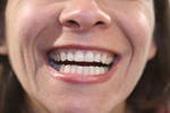|
Teeth treatment and modern dentistry
Excellent crowns and bridges were made by the Etruscans in the 7th cent. B.C. At about that time, teeth were being extracted in Asia Minor as a cure for bodily ills and diseases. Skills achieved by the Etruscans, Phoenicians, Egyptians, Greeks, and Romans were largely lost during the Middle Ages, when barbers and roving bands of charlatans practiced unskilled dentistry at marketplaces and fairs. Abulcasis, a Spanish Moor, was one of the few in his time who studied dental surgery. Your teeth are by far one of the most important things you use every day. Many people end up neglecting their teeth with improper oral hygiene. You should take care of them by brushing at least twice a day, flossing once per day, and going for regular dental checkups at least twice per year. New developments include the implantation of artificial teeth or binding posts into the gums or jawbone; antibiotic fiber for periodontal disease; root canal surgery, a procedure that ameliorates pain while permitting teeth to remain in place; and nearly painless lasers to repair dental cavities, usually making local anesthesia unnecessary. At some point or other in ours lives, most of us wind up with a cavity. In most cases, a cavity calls for your dentist to remove the decay and to fill in the tooth area that was removed. There have been a number of advances in the field over the past few years, so if you're one of the lucky ones and haven't had a cavity in a while, you should read up on what is available today so that you understand the choices available to you. Most of us have had amalgam fillings (silver) or gold filling restorations. Some amalgam fillings were what we have called mercury fillings, as some amalgam fillings contained mercury. Metal fillings were effective, but very conspicuous and tended to blacken in color over time. There are no known health risks of receiving composite fillings. If such a filling is not going to be enough to protect your damaged tooth, or if your tooth enamel is thin and will easily fracture, or if your tooth has had a root canal that weakened your tooth condition, your tooth may require additional protection such as a crown. If over half of your molar tooth's biting surface is decayed an inlay or onlay may be a better option than a filling. These options are basically for when more than a filling is needed but less than a crown will do. An inlay is placed in between the cusps of the tooth, whereas an only will cover one or more of the cusps. They can be made of a gold alloy, porcelain or tooth-colored resin and are cemented into place. Basically, bonding will cover any natural flaws applying a thin coating of a plastic material on the front surface of your teeth. After this, your cosmetic dentist will apply a bonding material and sculpt, color and shape it to provide a pleasing result. A high-intensity light then hardens the plastic, and the surface is finely polished. You are good candidate for tooth bonding, if you have close, small gaps between your front teeth, or if you have chipped or cracked teeth, you may be a candidate for bonding. Bonding is also used for patients who have discolored teeth, uneven teeth, gum recession or tooth decay. Bonding material is porous, so smokers will find that their bonding will yellow. If you think you are a candidate for bonding, discuss it with your dentist. Grinding your teeth, an improper bite, age, fillings and tooth decay can all be contributing factors in the wearing down, cracking or breakage of your teeth. Dental crowns cover the entire visible surface of your affected tooth and add strength, durability and tooth stability. In other instances, crowns are used to replace a actual missing tooth. These crowns are anchored to the teeth on either side, with a bridge section connecting the two crowns. Instead of bridges, single tooth dental implants may be used that eliminate the need for supporting the crowns. Your cosmetic dentist will make an impression of the tooth and a dental laboratory will create the crown. You will typically leave the office with a temporary crown to wear while the permanent crown is being made - this takes about two weeks. The permanent crown is then cemented onto your tooth. Typically, only two visits are required for this part of the procedure. Often, a preliminary restoration of your tooth may be needed before a crown can be placed. To stabilize your tooth, a filling must first be put in place prior to placing a crown due to the loss of original tooth structure. Tooth crowns usually last ten to fifteen years. Be sure to discuss with your cosmetic dentist that the cement color used for your permanent crown will be the same as used for your temporary crown. A try in paste is used for this purpose. The color of the cement does affect the overall color of a porcelain crown, so this needs to be discussed long before your temporary crown is placed.
Definition interpretingStomatology Tooth bleaching Look around, touch life!
|

